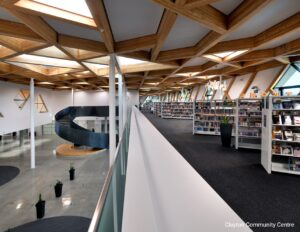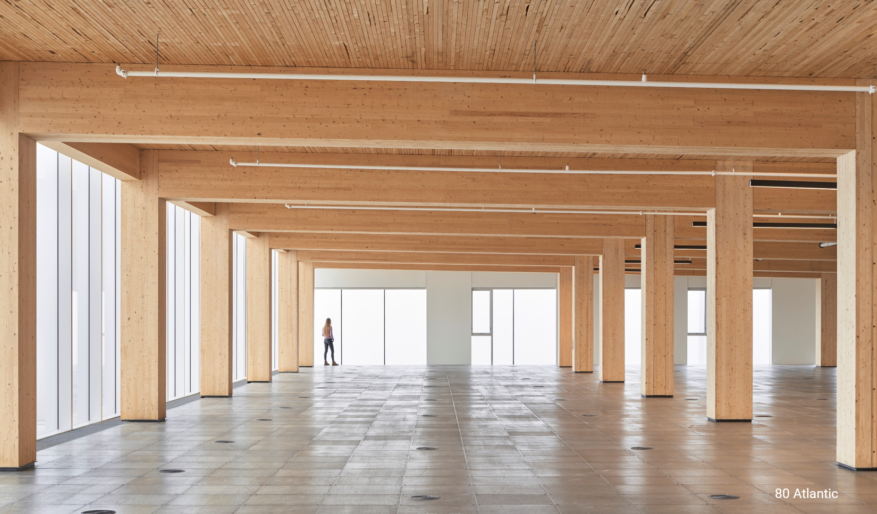Recently, Canada and the world have begun to embrace mass timber as a preferred construction material for large building projects. One reason, according to Tom Tong, associate with RJC Engineers, is that there are many new examples of successful mass timber projects showcasing this substance as a safe, versatile, sustainable substitute for more carbon-intensive materials like concrete and steel.
“Working with mass timber has become a lot easier today, thanks to the growing number of fabricators and the numerous out-of-shelf connectors that have been developed and tested,” Tong said. “In addition, 3D modelling, and CNC machining have made it possible for more complicated geometry and better tolerance control.”
What’s more, several governments have begun to promote wood as an important step on the road to decarbonization. Concerns about climate change, and the building sector’s primary role in altering its course, have led to the urgent need for construction materials that contribute fewer greenhouse gas (GHG) emissions. This, coupled with the innovative ideas coming from structural engineers have helped push the boundaries of what can be achieved using wood.
Citing a recent Passive House project in Surrey, BC, Tong pointed out one of the many ways wood’s use in construction has evolved.
 “For this project, the innovative structural design pushed the limits of wood-use in the building, proving that mass timber projects don’t have to be as simple as they used to be,” he said. “The wood framing system is typically referred to as a ‘one-way system’ because the wood member is designed and analyzed as a stick frame simply supported on both ends. For the Clayton Community Centre, the desired column grids and architectural intent led us to an innovative scheme composed of a three-member reciprocating wood modular that repeated and expanded in both directions, creating the two-way roof system, and earning the building an award.”
“For this project, the innovative structural design pushed the limits of wood-use in the building, proving that mass timber projects don’t have to be as simple as they used to be,” he said. “The wood framing system is typically referred to as a ‘one-way system’ because the wood member is designed and analyzed as a stick frame simply supported on both ends. For the Clayton Community Centre, the desired column grids and architectural intent led us to an innovative scheme composed of a three-member reciprocating wood modular that repeated and expanded in both directions, creating the two-way roof system, and earning the building an award.”
In other words, wood can do a lot more than people think.
TOP 5 BENEFITS
Considering using wood as a construction material in your next building project? Here are just some of the benefits of mass timber:
- Energy efficiency – Mass timber in building construction significantly reduces carbon emissions given that wood products and building systems have ability to store large amounts of carbon, unlike other materials.
- Speed – Mass timber components can be prefabricated in shops and assembled on-site to speed up the construction compared to the other building materials.
- Weight – Mass timber is much lighter compared to concrete, masonry, and steel, meaning the lot the building weight is reduced, which in turn reduces the seismic loading and foundation.
- Aesthetics – Wood is universally considered one of the most beautiful, versatile substances.
- Increasing safety – Studied and lab-tested, mass timber can achieve required fire resistance due to wood charring, which makes exposed timber structure possible.
Of course, there are still some limitations impacting uptake in large-scale mass timber construction projects. These, according to Tong, include ongoing code restrictions, cost implications, and the need for better methods to protect wood against moisture, shrinkage, and aging. That said, as more successful examples of wood projects continue to emerge, and public knowledge and acceptance of wood as a sustainable, durable building material develop, wood’s popularity will surely rise too.
Find out more about the benefits of wood at RJC.com or contact Tom Tong directly at ttong@rjc.ca









